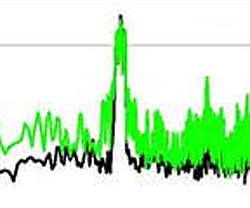
You may see some additional options when dithering, depending on the program or plug-in you’re using. These options further tweak the noise-shaping filter.
For completeness, I’ll give you a run down on what those options do:
Shape — determines how much noise-shaping actually occurs; ‘None’ being completely flat and ‘Ultra’ having the most drastic curve.
Amount — simply the level of the dither being added.
Auto Blanking — mutes the dither noise if the audio signal is completely silent (0) for at least 0.7s.
Limit Peaks — suppresses peaks in aggressive noise-shaped dither, as those peaks can reach -60 dB. (Shape-Ultra, Amount-High being as aggressive as it gets.)
Suppress Harmonics — If, for whatever reason, you decide not to add dither, but don’t want to leave all of the truncation artifacts behind, this option will alter the “truncation rules” and move some of the harmonic distortion away from the audible frequencies. The result is truncation with a better tonality.
While we’ve got a lot to consider, just in the dithering step alone, the truth is that unless the genre and mix are right, the difference between dithering and plain truncation is fairly inconsequential, but when applied properly, it can only make your audio sound better.
Lastly, the golden-rule of dither: If you can help it, only dither once throughout the process and only after you’ve down-sampled. Otherwise, you’ll just be compounding the dither noise.
Thanks for reading and hopefully you know something you didn’t an hour ago.
If you’d like to get even more into the nitty-gritty and learn more about mixing and mastering than you thought possible, I’d suggest picking up a copy of Bob Katz’s book here.
For some great information on digital audio, mediums, codecs, etc.: Principles of Digital Audio
Both of these are great references for any engineer.
[Note: Source audio from Chesky Reference Disc. Examples completed using Triumph and Ableton Live.]
Be sure to visit the Pro Audio Files for more great recording content. To comment or ask questions about this article go here.
